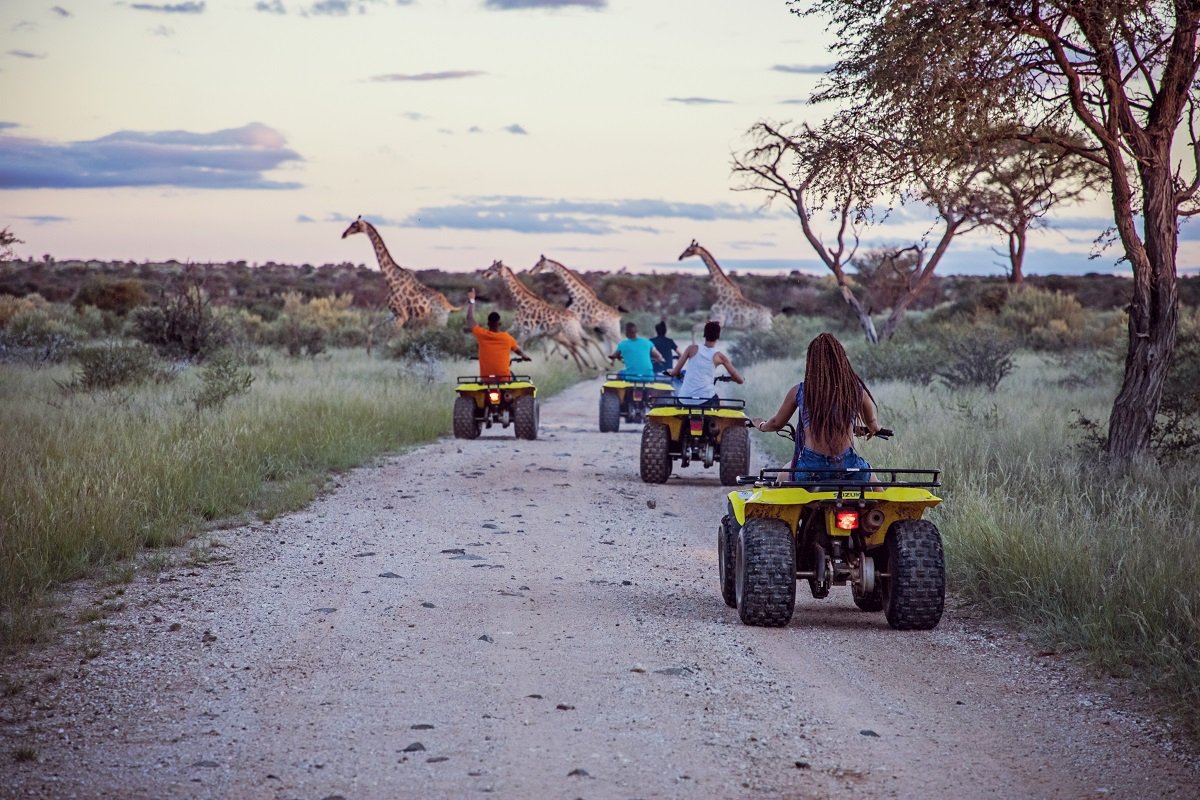As the sun dipped below the horizon, painting the sky with hues of orange and purple, Ndidi stood at the edge of the Ngorongoro Crater in Tanzania. This was her second trip to Africa, but it felt like a completely new world each time she visited. The call of the wild had always drawn her to the continent, but this time, it was something more—something deeper. She was here not just as a tourist but as a participant in a burgeoning movement: the rise of adventure tourism in Africa.
Ndidi had first heard about Africa’s potential as a premier adventure destination during a travel conference in London. The continent, long associated with wildlife safaris, was now being recognized for its vast, untapped potential in the realm of extreme sports, cultural immersion experiences, and eco-friendly tourism. From the towering dunes of Namibia to the dense forests of Uganda, Africa was quickly becoming the go-to destination for those seeking the thrill of the unknown.
In Ghana, Kwame, a local entrepreneur, was at the forefront of this revolution. He had spent years working in the corporate world in Accra, but his heart was always in the rural areas where he had grown up. With a passion for adventure and a deep love for his homeland, Kwame founded “Ashanti Adventures,” a company that offered guided treks through the Ashanti region, combining cultural heritage with physical challenge. His goal was not just to attract tourists but to create opportunities for local communities.
“Adventure tourism isn’t just about the thrill,” Kwame explained to Ndidi when she visited his base camp. “It’s about connecting people with the land, the culture, and the people. It’s about showing the world the richness of Africa beyond the safaris.”
Kwame’s tours included everything from mountain biking through the lush forests of the Ashanti region to canoeing down the Volta River, where tourists could camp on remote islands and learn about the traditional ways of life from the local Ewe people. His approach was holistic, ensuring that every tour supported local businesses and contributed to conservation efforts.
In Morocco, Amira, a former journalist, had also caught the adventure tourism bug. After years of reporting on social issues across North Africa, she decided to take a different path. She founded “Sahara Journeys,” an adventure company that offered desert expeditions deep into the Sahara. But unlike the typical tourist experiences, Amira’s tours focused on sustainability and cultural exchange.
“We need to protect our environment and our heritage,” Amira told Ndidi over tea in a traditional Berber tent. “Tourism can be a double-edged sword if not managed properly. That’s why I work with local Berber communities to ensure that our tours have a minimal impact on the environment and provide real benefits to the people who live here.”
Amira’s tours were a blend of thrill and tradition. Tourists could ride camels across vast sand dunes, visit ancient Berber villages, and camp under the stars in eco-friendly tents. They could also participate in cultural workshops, learning about traditional crafts, music, and cooking. Amira’s vision was to create a tourism model that celebrated Morocco’s rich history while paving the way for a sustainable future.
Meanwhile, in South Africa, Thabo was taking adventure tourism to new heights—literally. A former rock-climbing champion, Thabo had traveled the world but always felt that South Africa’s potential for adventure sports was underappreciated. He returned home and started “ClimbSA,” a company that offered rock climbing, bungee jumping, and paragliding experiences in some of the most breathtaking locations in the country.
“South Africa has some of the most diverse landscapes in the world,” Thabo explained to Ndidi as they stood at the top of Table Mountain in Cape Town. “From the Drakensberg Mountains to the cliffs of the Western Cape, there’s no shortage of places for adventure. But we also have a responsibility to ensure that these activities are done safely and sustainably.”
Thabo’s company was known for its rigorous safety standards and its commitment to conservation. He partnered with local environmental organizations to ensure that all activities had minimal impact on the natural environment. Additionally, Thabo was passionate about making adventure sports accessible to local communities, offering training programs and scholarships for young South Africans who wanted to pursue careers in the industry.
As Ndidi traveled from one African country to another, she saw firsthand how adventure tourism was transforming the continent. In Kenya, she hiked with Maasai guides through the Loita Hills, learning about their deep connection to the land. In Uganda, she trekked through the Bwindi Impenetrable Forest to see mountain gorillas, an experience that left her in awe of the region’s biodiversity. In Zambia, she white-water rafted down the Zambezi River, feeling the raw power of nature in every rapid.
But as thrilling as these experiences were, Ndidi was even more impressed by the people she met along the way—people like Kwame, Amira, and Thabo, who were using adventure tourism as a tool for empowerment and conservation. They were redefining Africa’s tourism landscape, showing that the continent had much more to offer than the traditional safari experience.
The future of adventure tourism in Africa, Ndidi realized, was not just about attracting thrill-seekers. It was about fostering a deeper connection between tourists and the continent. It was about creating opportunities for local communities, protecting the environment, and preserving cultural heritage. It was about showing the world a different side of Africa—one that was vibrant, diverse, and full of possibilities.
As Ndidi prepared to return home, she felt a renewed sense of purpose. She had come to Africa seeking adventure, but she was leaving with much more—a deep appreciation for the continent’s potential and a commitment to supporting its growth. The future of adventure tourism in Africa was bright, and she was excited to be a part of it.
Back in her hotel room, Ndidi reflected on her journey. Africa was a continent of contrasts, with landscapes ranging from deserts to mountains, forests to savannas. But what struck her most was the sense of possibility that pervaded every place she visited. Adventure tourism was more than just a trend; it was a movement, driven by passionate individuals who believed in the power of travel to change lives.
In the years to come, Ndidi knew that Africa would continue to rise as a top destination for adventure tourism. The continent’s natural beauty, combined with its rich cultural heritage and the entrepreneurial spirit of its people, would attract travelers from all over the world. And as more tourists flocked to Africa’s shores, they would discover, as Ndidi had, that the real adventure was not just in the landscapes, but in the people and the stories they carried.
As the plane took off, Ndidi looked out the window at the vast expanse of the African continent below. She knew she would return—there was still so much to explore, so many stories to uncover. The future of adventure tourism in Africa was just beginning, and Ndidi was excited to see where the journey would take her next.








